American and British recoilless guns
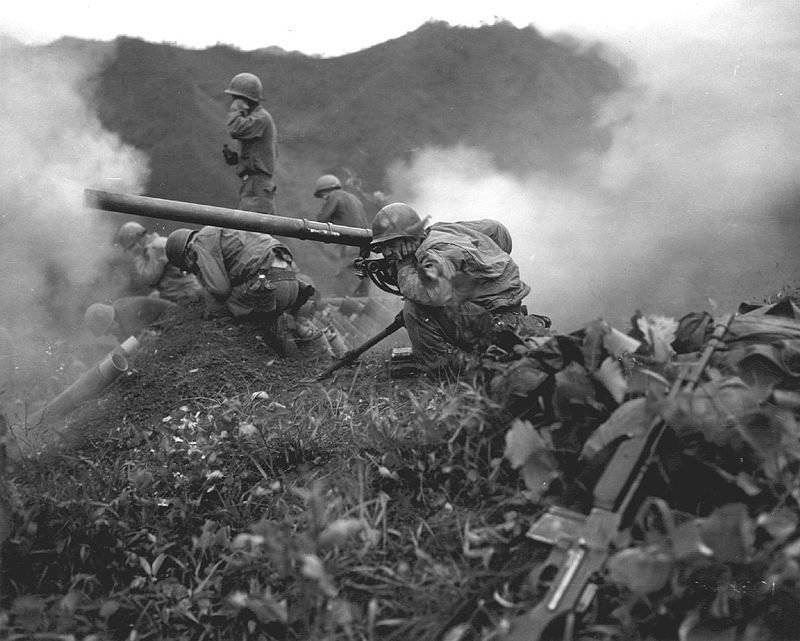
During the Second World War, the American infantry quite successfully used against tanks enemy 60-mm rocket launchers M1 and M9 "Bazooka". However it is effective for its time weapon was not devoid of a number of drawbacks.
Based on combat experience, the military wanted to have a more long-range, durable and less weather-prone weapon. During the hostilities, the cases of the loss of the combat capability of American grenade launchers, which had an electrical launch circuit after being hit by rain, were repeatedly recorded.
In 1944, a lightweight 57-mm dynamo-active (recoilless) M18 gun was adopted (in the American classification, the M18 recoillessrifle was called the M18 recoilless rifle).
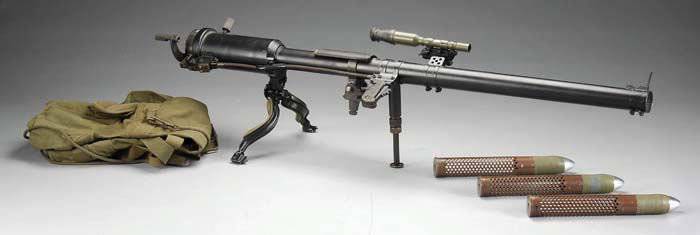
The recoilless M18 was a steel rifled barrel 1560 mm long, open at both ends, the rear part of which had a hinged gate with a nozzle for the release of powder gases that compensate for recoil when fired. The barrel has a pistol grip with a mechanical trigger mechanism, a folding bipod (in the folded position serving as a shoulder rest), as well as a bracket of a standard telescopic sight.
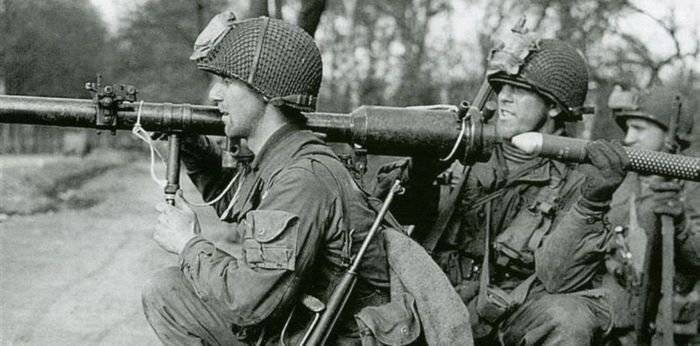
Ammunition for M18 served as unitary shots with a steel sleeve. The mass of the shot was about 2,5 kg, of which approximately 450 grams were for powder - a propellant charge and 1,2 kg - for a shot grenade. The steel sleeve had round holes in its side walls around 400, through which most of the powder gases when fired broke into the barrel chamber and out of it, into the nozzle, thereby compensating for weapon recoil and creating a significant danger zone behind the grenade launcher. The powder propellant charge inside the liner is in a burning bag of nitrocellulose fabric. The ignition of the propellant is a mechanical shock, with the help of a standard primer-igniter located at the bottom of the sleeve. The shells are charged in a grenade launcher from the breech after the bolt is opened with the nozzle. After the shot, it was necessary to remove the cartridge case from the barrel.
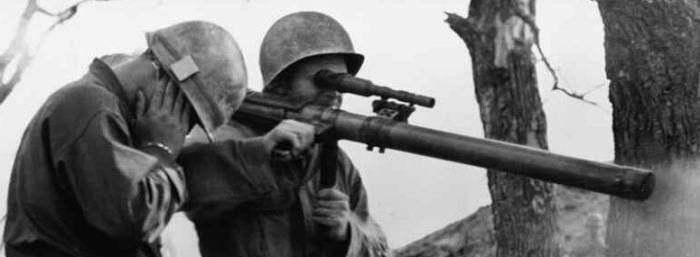
With a weight of just over 20 kg, the 57-mm M18 was quite flexible in use and allowed firing from the shoulder. However, the main position for shooting was firing from the ground (with an emphasis on the bipod).
The most accurate shooting was achieved with the installation of the recoilless cannon body on the machine-tripod of the Browning М1917А1 machine gun. The effective range of fire was within 400 m, the maximum range exceeded 4000 m.
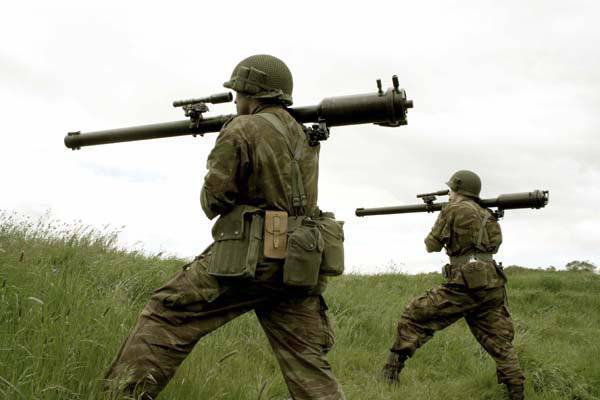
The first use of the M18 anti-tank tracer belongs to the 1945 year, they were also massively used during the Korean War. At the same time, they showed a lack of effectiveness against the Soviet medium tanks T-34, with armor penetration in 75-mm, the armor damage effect of cumulative projectiles was not always sufficient. However, they were successfully used by the American and South Korean infantry against light fortifications, machine-gun nests and other similar targets, due to the presence of high-explosive and incendiary smoke shots in the ammunition.
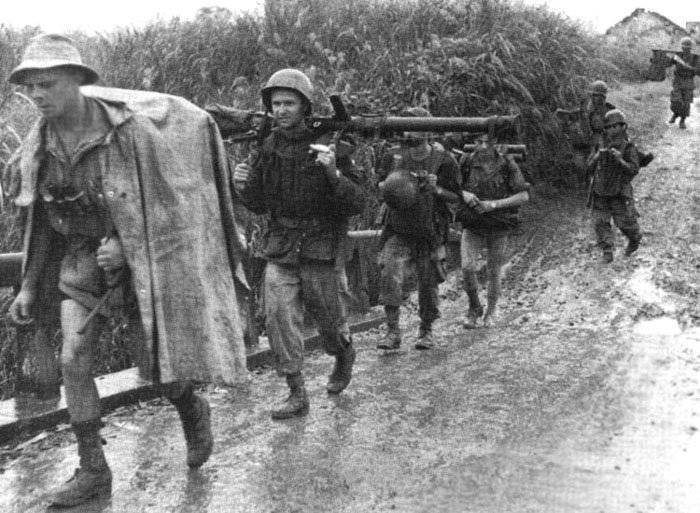
Having a relatively small mass, the M18 could be transported and used by one soldier, for which it was valued among the troops. This weapon, in fact, was a transitional model between hand-held anti-tank grenade launchers (RPGs) and recoilless guns. Along with the bazooka grenade launchers, rifle anti-tank grenades, recoilless 57-mm guns in the first post-war decade were the main anti-tank equipment of the company level in the American army.
In the US, the 57-mm M18 recoilless ones were quickly replaced by more powerful grenade launchers and recoilless guns, but as part of the military assistance program, US-friendly regimes spread widely throughout the world. In some countries, licensed production of these boxless trades was established. In Brazil, the M18 was produced until the mid-80-x. The Chinese version of this weapon, known as the 36 Type, was widely used in the Vietnam War, this time against the Americans and their satellites.
In June, the 1945-mm M75 20 mm recoilless gun was adopted. By design, the M20 was a lot like the 57-mm M18, but it was the largest and weighed 52 kg.
It had a wide range of ammunition, including a cumulative projectile with armor penetration to 100 mm, a fragmentation projectile, a smoke projectile and a canister. An interesting feature of the M20 munitions was that the projectiles had ready-made grooves on the leading belts, which, when loaded, were combined with the rifling of the gun barrel.
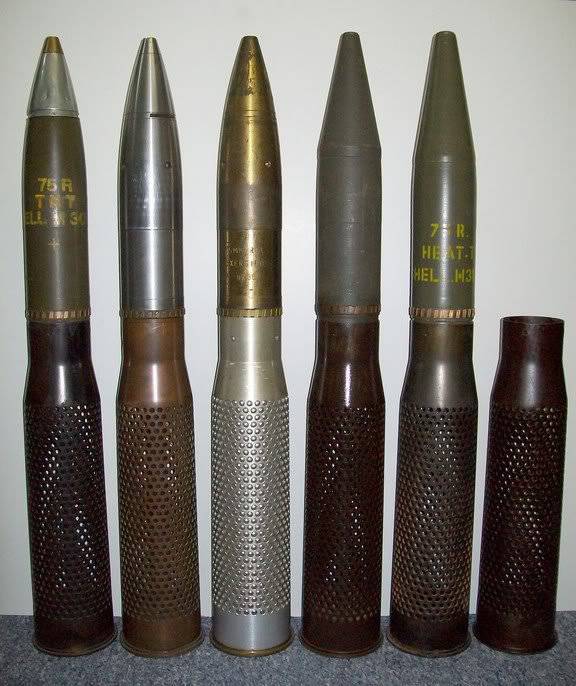
The effective range of firing at tanks did not exceed 500 m, the maximum firing range of high-explosive fragmentation projectile reached 6500 m.
In contrast to the 57-mm guns M18 firing was provided only with the machine. As the latter, the machine from the Browning machine gun M1917A1 of caliber 7,62-mm was most often used.
In addition to the machine version, this gun was installed on various vehicles: off-road vehicles, armored cars, armored personnel carriers, and even scooters.
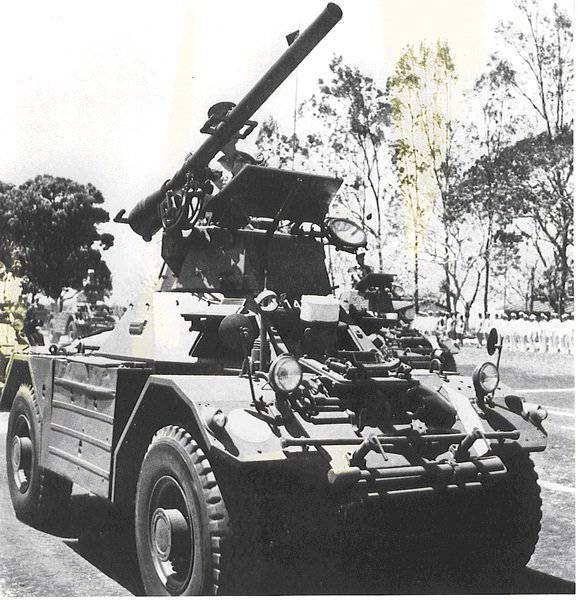
The 75 mm M20 recoilless gun in the infantry units of the American army was an anti-tank battalion unit. At the final stage of the war, the M20 was limitedly used against Japanese weapon emplacements during the Okinawa fighting. Much larger it was used during the hostilities in Korea.
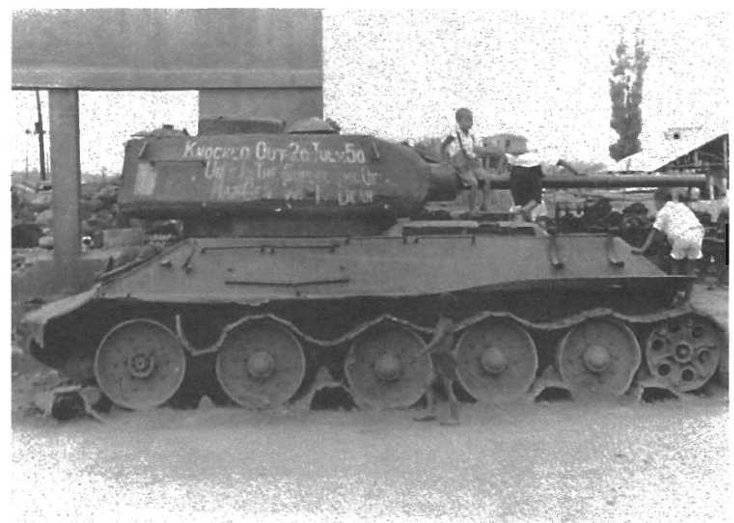
Although the armor penetration capability of 75-mm cumulative projectiles was quite enough for the confident defeat of the North Korean T-34s, this weapon was not particularly popular as an anti-tank weapon.
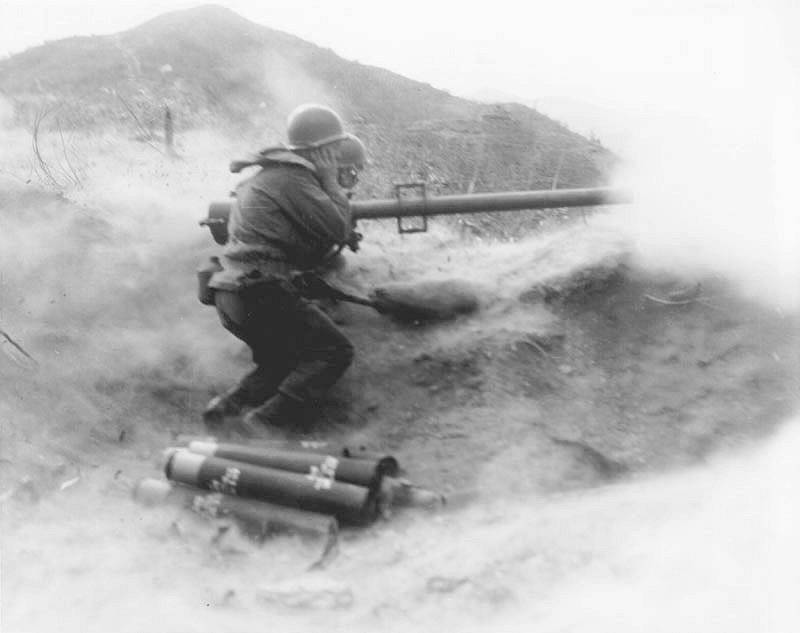
The reason for this was a large unmasking effect when fired, the need for a certain free space behind the gun, which made it difficult to place in shelters, low rate of fire and considerable weight, preventing rapid change of positions.

Much more often in the conditions of a mountainous hilly terrain peculiar to a considerable part of the Korean peninsula, М20 was used to fire at enemy positions and destroy enemy firing points.
The 75 mm M20 recoilless gun has become widespread. The guns can still be found in the arsenals of a number of third world countries. Chinese copies of Type 52 and Type 56 were first used by the Vietcong against the Americans, and then by the Afghan Mujahideen against the Soviet contingent in Afghanistan.
After the start of mass production in the USSR of T-54 and EC-3 75-mm recoilless guns M20 lost its relevance as an anti-tank tool. In this regard, in the United States began work on the creation of more powerful recoilless guns.
Haste in this matter did not lead to anything good. The recoil-free 1951-mm gun M105 adopted in 27 turned out to be unsuccessful. In 1953, it was replaced by an 106-mm M40 (which was actually 105-mm in caliber, but indicated so as to avoid confusion of ammunition with the previous model).
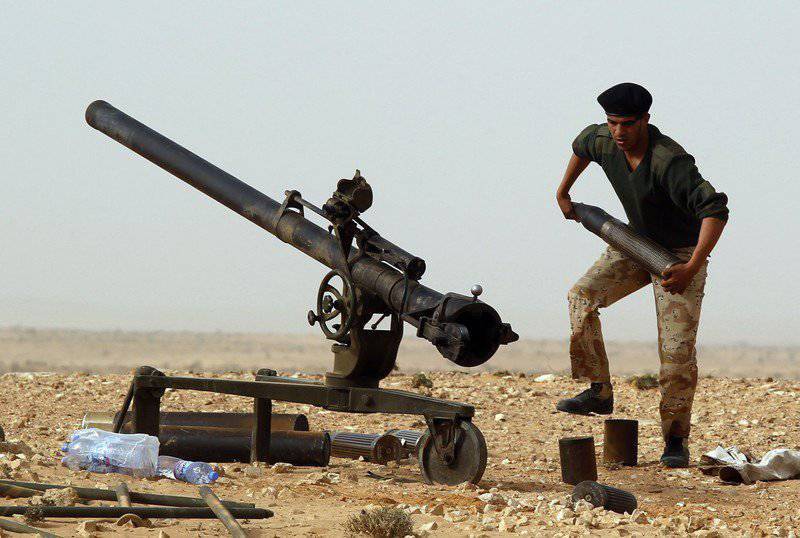
The M40 is the first recoilless weapon adopted in the USA, equipped with an aiming device for shooting both direct fire and from firing positions. For this purpose, the sights are mounted on the gun
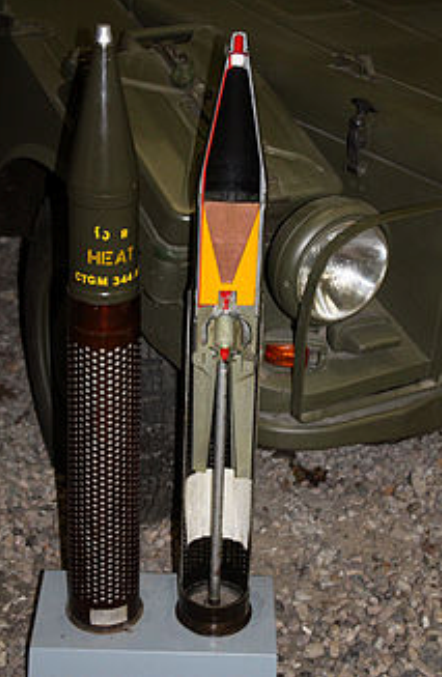
Like other American recoilless guns, it used a perforated sleeve with small holes. Some of the gases passed through them and were thrown back through special nozzles in the breech breech, thus creating a reactive moment damping the recoil force.
Swivel and lifting mechanisms tools equipped with manual drives. The carriage is equipped with three sliding beds, one of which is equipped with a wheel, and the other two with folding handles. An 12,7-mm sighting machine gun M8 (which uses special tracer cartridges with ballistics corresponding to the trajectory of a 106-mm cumulative projectile) for firing is mounted on the top of the gun.
The maximum firing range of the 18,25 kg with a high-explosive fragmentation projectile reached 6800 m. The firing range of an anti-tank cumulative projectile 1350 m (effective around 900 m). Rate of fire to 5 fps. / Min.
The ammunition consisted of shells for various purposes: high-explosive fragmentation, fragmentation with ready-made killer elements, cumulative, incendiary and high-explosive-high-explosive with plastic explosives. The armor penetration rate of the first cumulative projectiles was within 350 mm.
Taking into account the total length of the 3404 mm and the weight of the 209 kg gun, the M40 gun was much more frequently installed on various vehicles compared to the earlier American rollback boxes. Most often, these were light all-terrain vehicles.
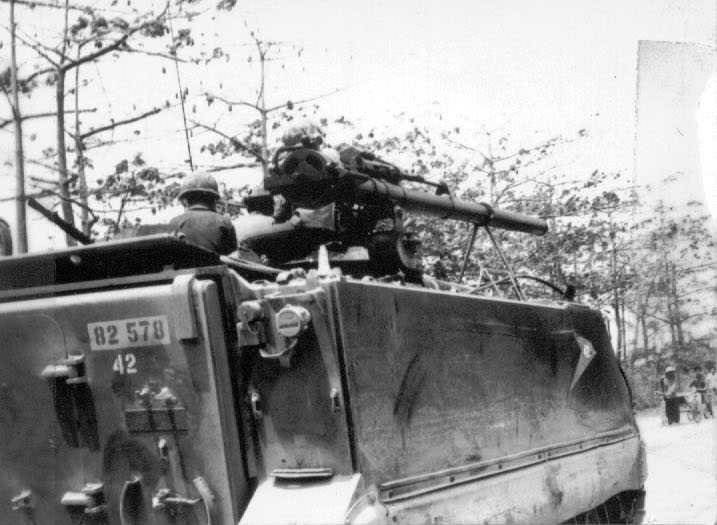
However, there have been repeated attempts to mount 106-mm recoilless guns and heavier equipment. The most famous combat vehicle was the American anti-tank self-propelled artillery unit M50, also known as "Ontos". Which was created on the basis of an experienced armored personnel carrier T55 in 1953, and was intended to arm the units of the marine corps and airborne forces.
The gun was armed with six recoilless guns M40A1C, located outside the sides of the turret, four 12,7-mm sighting and one 7,62-mm anti-aircraft machine guns.
During serial production in 1957 — 1959, the 297 M50 was released, they were in service with the US Marine Corps from 1956 to 1969 a year and took part in the Vietnam War. Basically, the "Ontosov" used as artillery support for infantry. Their light weight made it easy to maneuver in the marshy soils of Vietnam. At the same time, "Ontosov" with their anti-bullet armor were very vulnerable to RPGs.
Another mass-produced vehicle with 106-mm recoilless guns was the Japanese self-propelled artillery mount, Type 60. The main armament of the ACS is two modified M40 recoilless American guns, which are mounted openly on a rotating platform and shifted to the right from the centerline of the hull. For adjustment use 12,7-mm machine guns M8. The crew of two people: a driver and commander of the machine, which simultaneously performs the functions of the gunner. Regular ammunition is six shots.
Serial production of the Type 60 was carried out by Komatsu from 1960 to 1979 year, in total 223 machines were produced. As of 2007 year, these PT SAU were still in service with the Japan Self-Defense Forces.
The 106 mm M40 recoilless guns in the US Army were replaced with ATGMs in the middle of the 70s. In the armies of many other states, these most widely spread weapons continue to be used until now. In some countries, licensed production of 106-mm recoilless and ammunition has been established.
In the course of combat operations, it was relatively rare to fire on tanks without knobs of the M40, usually they were used to provide fire support, destroy fire points and destroy fortifications. For these purposes, simple and reliable in use, possessing a sufficiently powerful projectile guns fit perfectly well.
106-mm recoilless rifles are very popular with various insurgents. It became a common practice to make them handicraft on cars that were not originally intended for this purpose.
In the United States and Canada, after the armed forces finally abandoned recoilless guns, their service continued in the Avalanche Security Service.
The guns were installed both on pre-equipped platforms and on tracked carriers.
Special mention deserve the American "nuclear bezotkatki": 120-mm gun M28 and 155-mm gun M29.
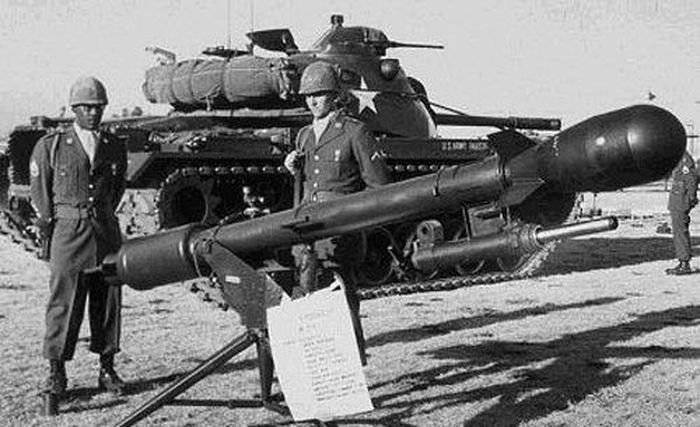
Both guns fired the same XM-388 "Davy Crocket" projectile with a W-54Y1 nuclear warhead with 0,01 CT power. An over-caliber droplet-shaped projectile was mounted on the piston, which was inserted into the barrel from the muzzle and separated after the shot. His tail stabilized in flight.
The gun barrel of the caliber 20-mm in М28 and 37-mm in М29 was fixed under the barrel of the guns. The lightweight gun M28 was mounted on a tripod and, when carried manually on the battlefield, was quickly disassembled into 3 units whose weight did not exceed 18 kg.
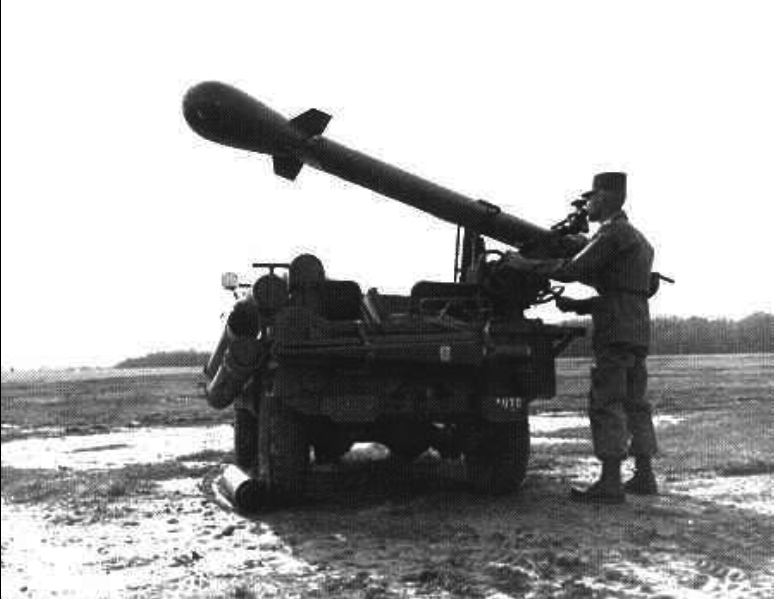
The M29 cannon was installed in the body of an all-wheel drive car on the tumbler carriage. The same car carried 6 shots and a tripod, from which it was possible to fire from the ground. The firing range was not great, to 2 km from the M28 and to 4 km from the M29. The maximum circular probable deviation (QUO), respectively, is 288 m and 340 m.
The Davy Crocket system has been in service with US units in Europe since the mid-60. At the end of the 70-x system is removed from service.
Work on recoilless guns in the UK began after the end of the Second World War. Taking into account the American experience, the British decided to immediately build tools capable of effectively fighting Soviet post-war tanks.
The first British model was the 120-mm BAT recoilless gun (L1 BAT), which was put into service in the middle of the 50-s. It resembles a conventional artillery gun with a lightweight carriage with a large shield cover and had a rifled barrel with a bolt, in the rear end of which the nozzle was screwed. A tray is attached to the top of the nozzle for easy loading. At the muzzle of the trunk there is a special device for towing the gun by car or tracked tractor.
Shooting is carried out by unitary shots with armor-piercing-high-explosive tracer shells, equipped with plastic explosives with 250-300 mm armor penetration material. The length of the shot is about 1 m, the weight of the projectile is 12,84 kg, the effective firing range for armored targets is 1000 m.
The use by the British of armor-piercing high-explosive shells with plastic explosives was due to the desire to have in the ammunition ammunition a single universal projectile that could be fired at any targets, depending on the setting of the fuse.
When hitting the armor, the soft head of such a projectile flattens out, the explosive sticks to the armor, and at this moment is undermined by a fuse. In the armor there are waves of tension, leading to the separation from its inner surface of the fragments, flying with great speed, hitting the crew and equipment.
In addition to the deficiencies inherent in all recoilless guns (small effective firing range, low accuracy in firing at maneuvering targets, the presence of a danger zone behind the gun due to the expiration of powder gases when firing), BAT also has the disadvantage of conventional guns - greater weight (about 1000 kg) .
120-mm recoilless gun "Bath" later went through several stages of modernization, according to which its name was changed to "Mobat" (L4 MOBAT).
The Mobat was a lightweight version of the artillery system. Weight reduction by about 300 kg was achieved mainly due to the dismantling of shield cover. Over the barrel set sighting machine gun.
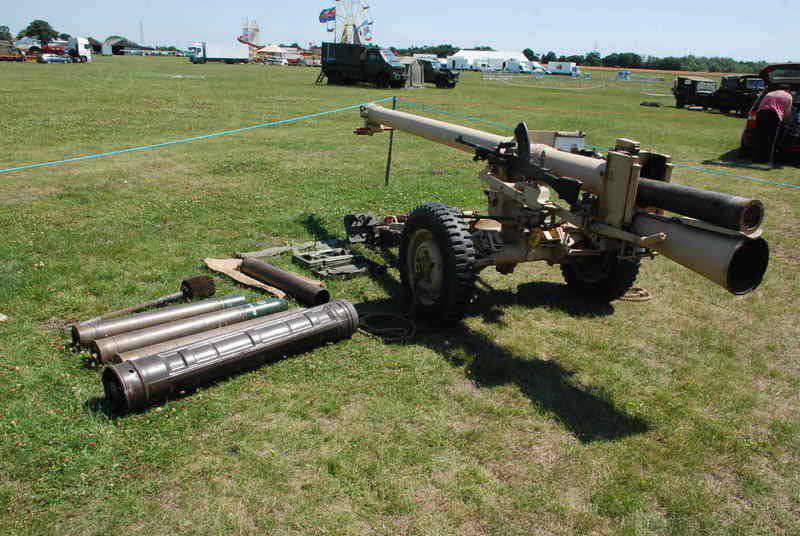
Further modernization led to the creation of an almost new Wombat gun (L1962 Wombat) in 6. It has a rifled barrel made from high-strength steel with an improved gate. The gun carriage is made of light alloys. In the firing position, the carriage is held in a vertical position with the help of a boom leaning forward. Top mounted parallel to the barrel sighting 12,7-mm machine gun. Weight guns about 300 kg.
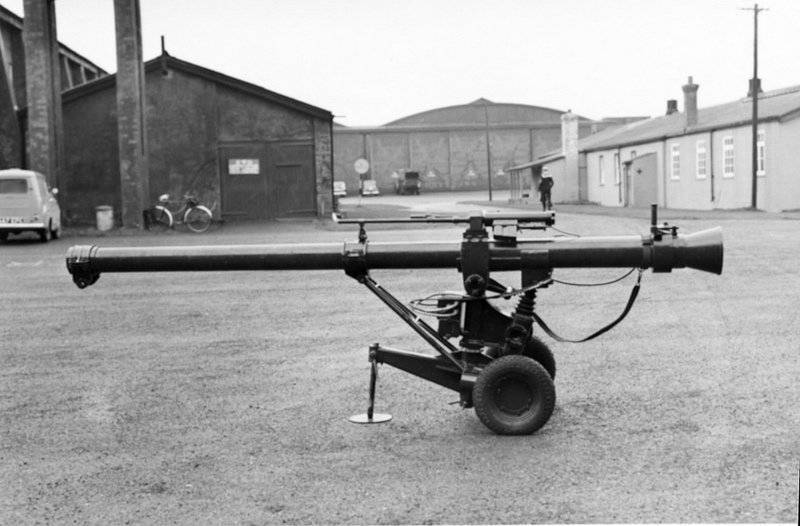
The ammunition consists of unitary shots with a cumulative projectile weighing 12,84 kg, piercing the 1000 distance m armor 250-300 mm thick, armor-piercing tracer with plastic explosive, and a fragmentation projectile with arrow-shaped attack elements.
During the development of the upgraded sample, great attention was paid to ensuring convenience and safety when firing and servicing the gun. For increased mobility, the Wombat can be mounted on the Trojen FV 432 armored personnel carrier or Land Rover vehicle.
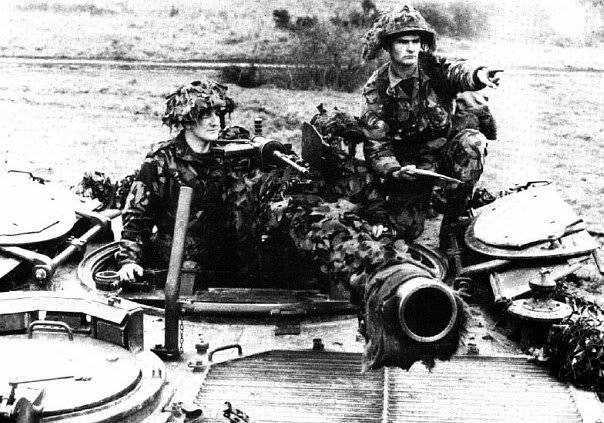
Recoilless guns served in the British army for much longer than in the US, remaining in service until the end of the 80s. In some armies of the countries of the British Commonwealth 120-mm recoilless guns are in service until now.
Created as an easy and inexpensive means of fighting Soviet tanks, American and British recoilless guns in the early 70s were pushed back from this role by more effective anti-tank missiles.
However, recoilless guns have become widespread throughout the world, few armed conflicts have managed without their participation. Significantly inferior to ATGM in accuracy of firing, recoilless rifles unconditionally benefit in the cost of ammunition, strength and flexibility of use.
Based on:
http://www.combatreform.org/reconinforce.htm
http://www.military-history.org/
Hogg Ian. Crushing armor Anti-tank weapons on the battlefields of the twentieth century. - M .: Eksmo, 2006.
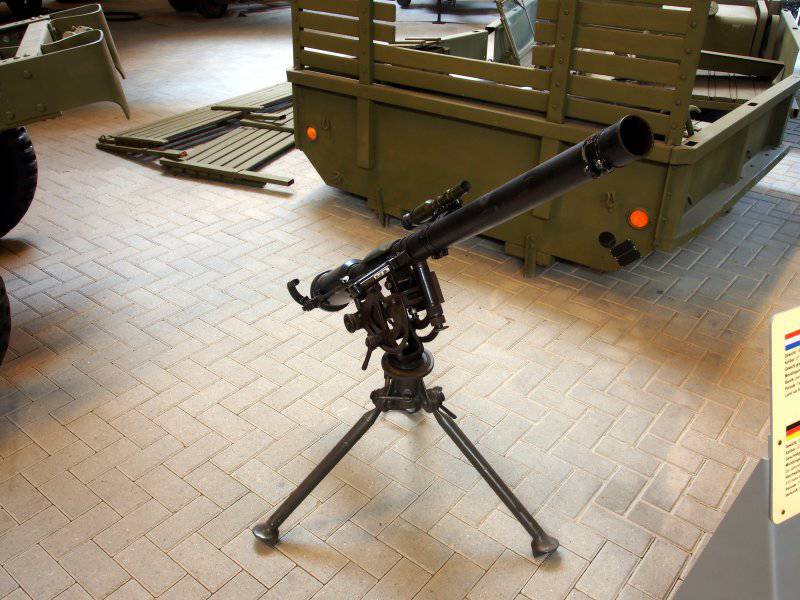
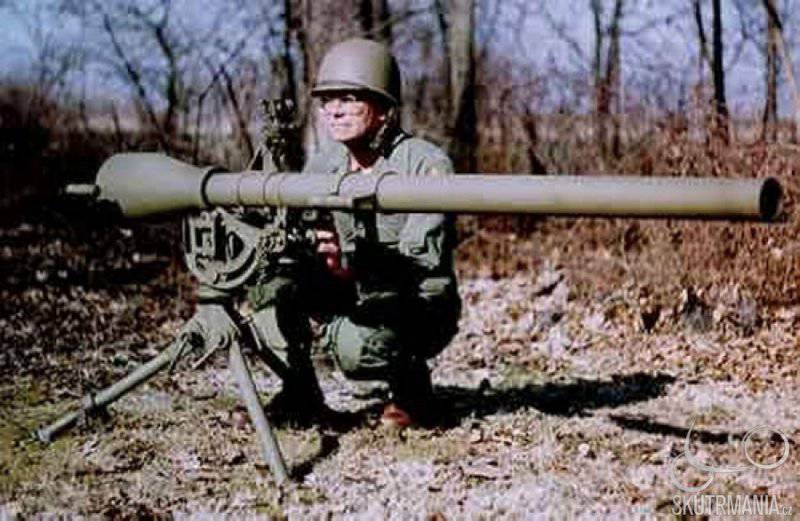
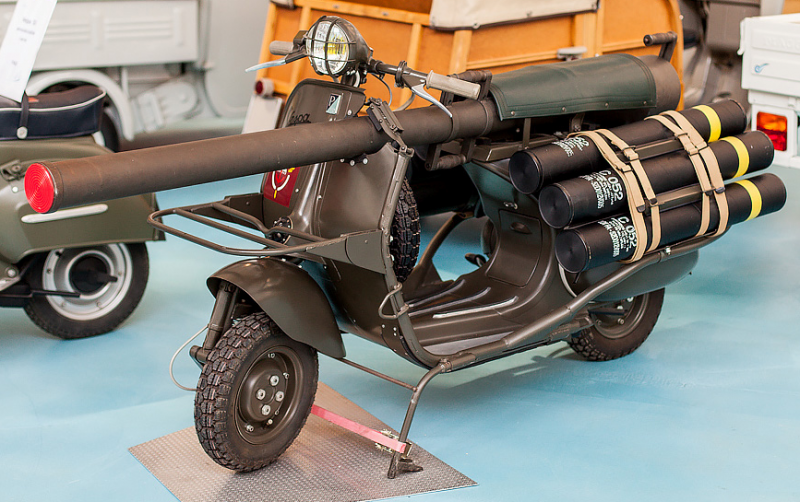
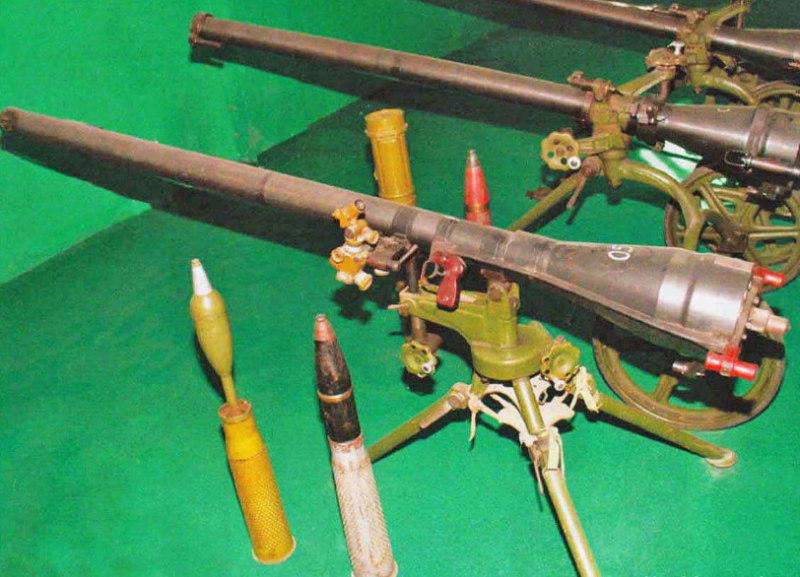
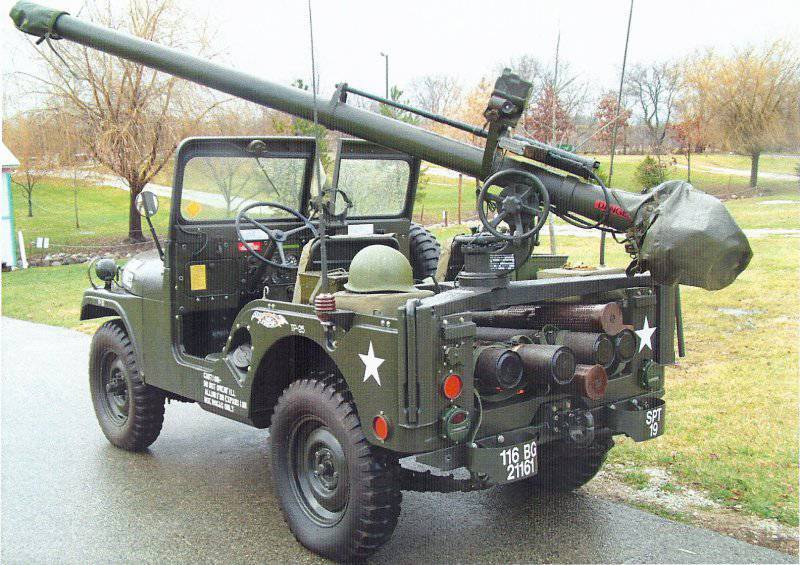
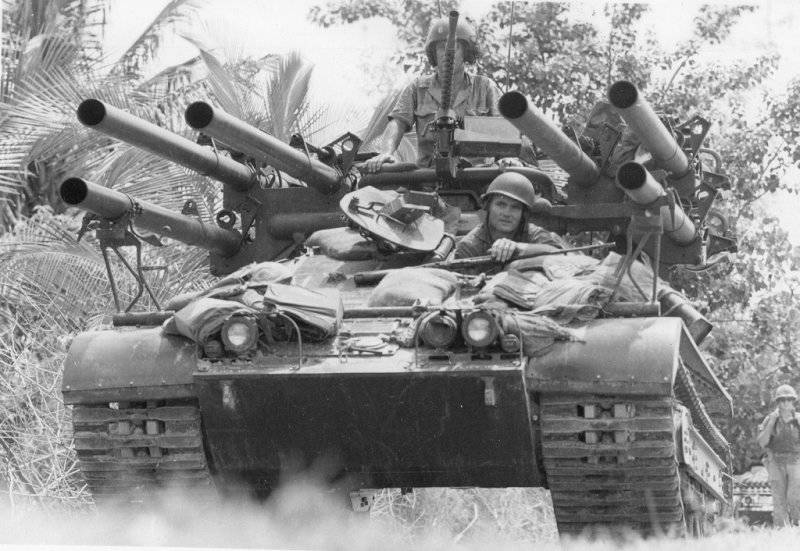
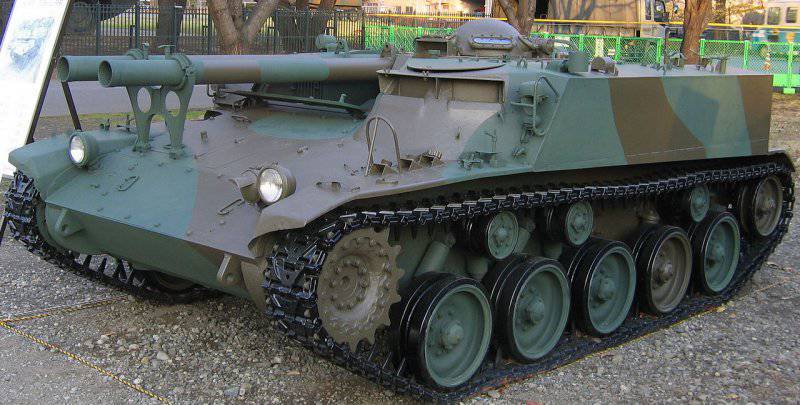
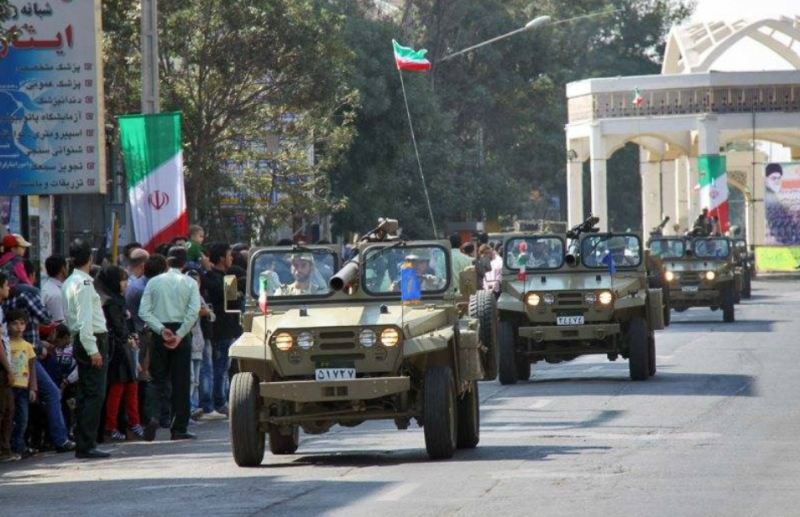
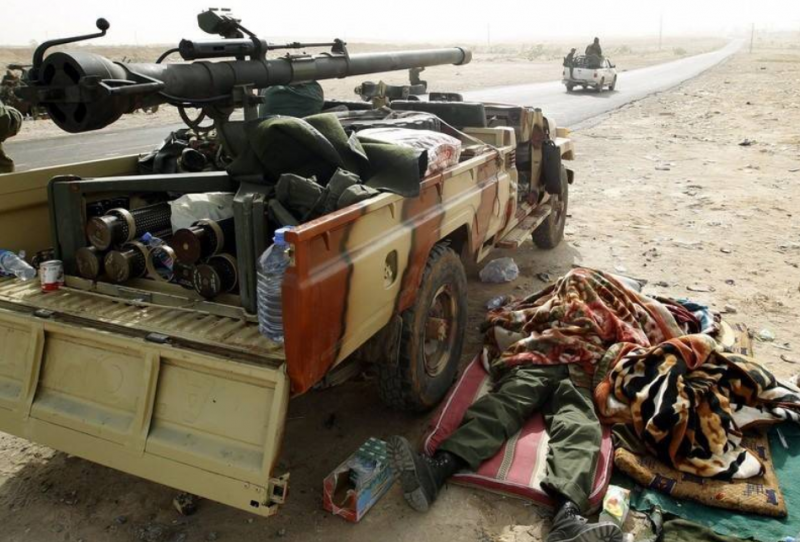
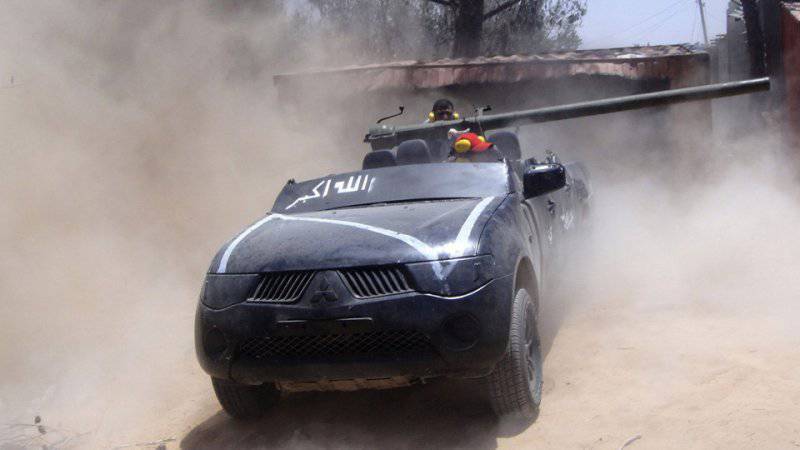
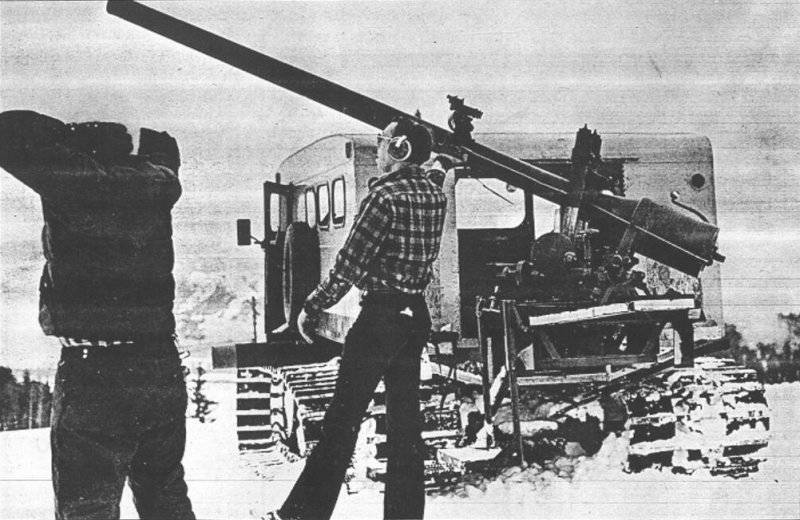
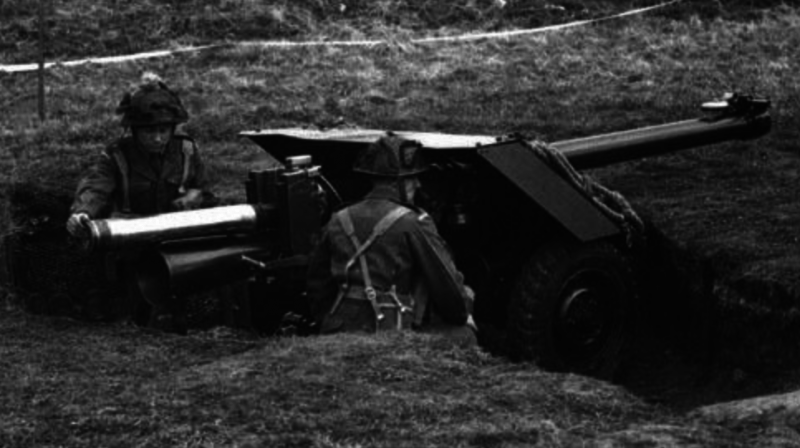
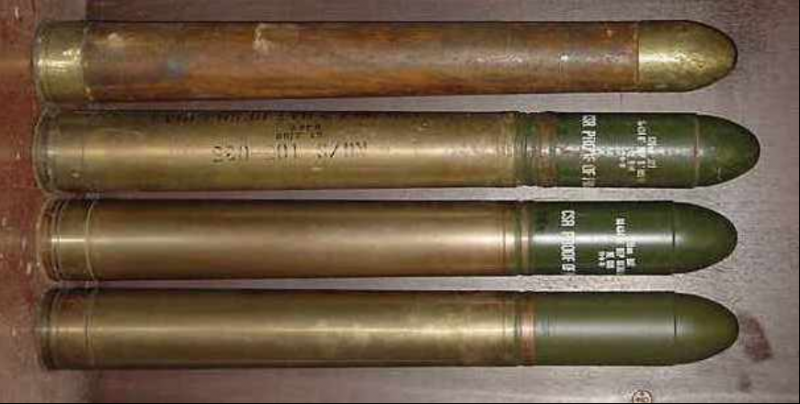
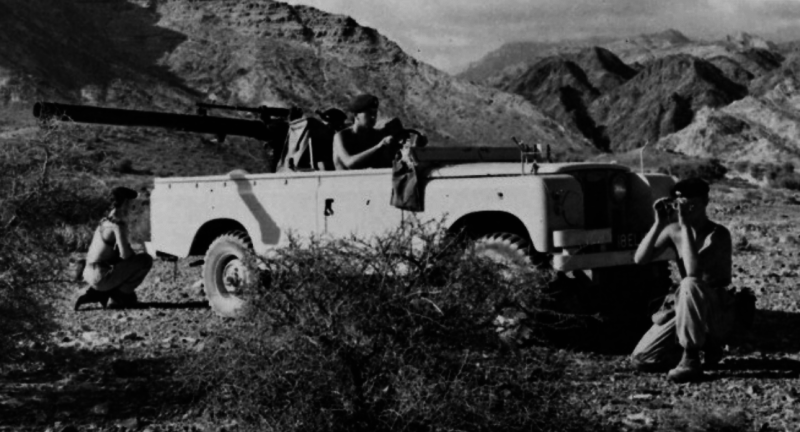
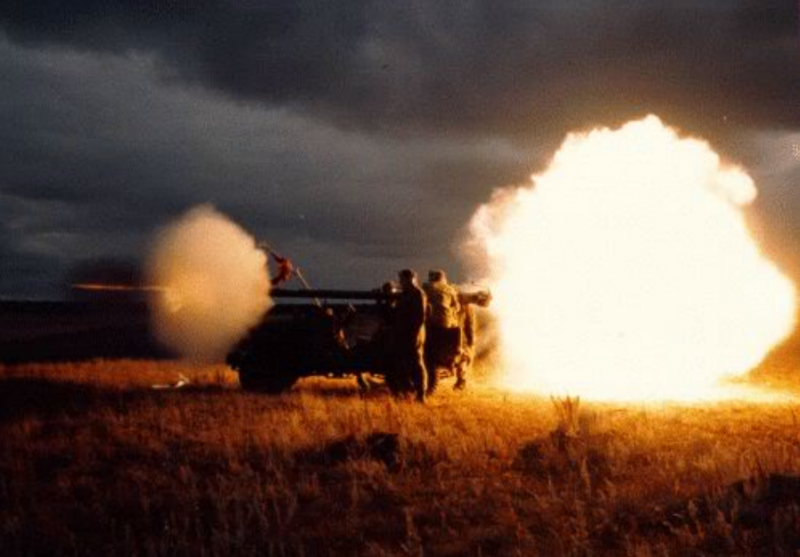
Information